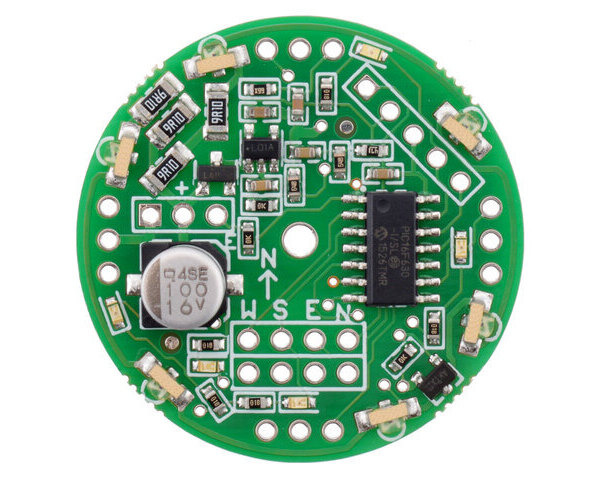Pololu IR Beacon Development Board
The IR beacon development board is just an assembled IR Beacon PCB with no IR sensors or firmware. This item is intended for advanced users who want to customize their IR beacon functionality by writing their own firmware. No documentation is shipped with this IR Beacon Development kit.
| Description | Specs (6) | Pictures (3) | Resources (3) | FAQs (3) | On the blog (0) | Distributors (0) |
|---|
- Do the IR beacons work outside?
- Not really. Because the IR beacons are based on light, brighter ambient conditions will result in a lower operating range. Outdoor applications also usually require longer ranges, and the maximum range of these IR beacons is about 20 feet (indoors).
- Can I add IR filters to prevent interference from fluorescent lights?
- The IR sensor modules already include IR filters. The problem is that some types of fluorescent lights emit the same kind of IR as the beacons use (same light wavelength, same modulation frequency), so there’s not much you can do about it. Sometimes, shielding the sensors from direct view of the lights can be enough to make things work (that’s why they are on the bottom of the PCB).
- How much current does the Pololu IR beacon draw?
The IR emitters are driven in brief bursts of high current, so the peak current is much higher than the average. Also, the beacon tries to compensate for input voltage by changing the duty cycle of the bursts, so the peak current changes with voltage much more than the average current. Here are a few typical operating points:
Input Voltage Peak Current Average Current 5 V 200 mA 30 mA 6 V 300 mA 40 mA 9 V 600 mA 45 mA 12 V 750 mA 35 mA The currents above do not include the current used for any IR receivers, which typically use a few mA each. (This information applies only to IR beacons running the preloaded Pololu firmware.)








